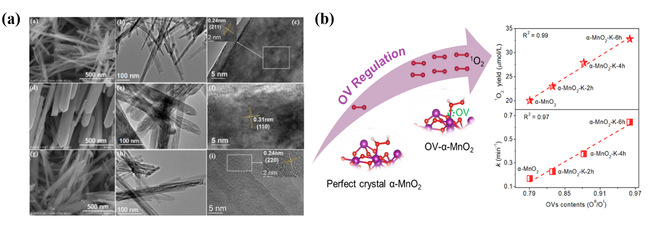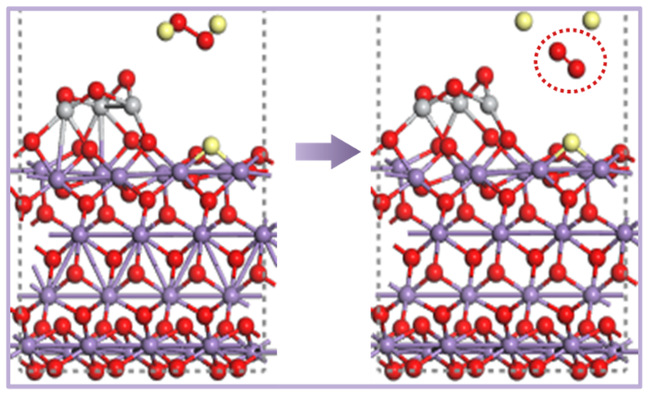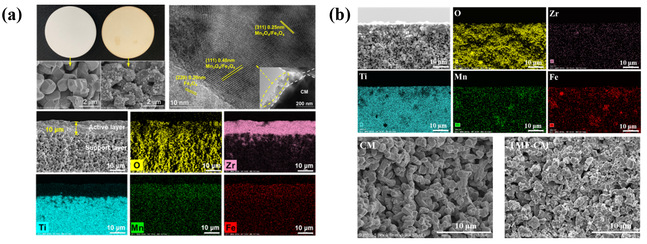
Breakthroughs in Novel Nanocatalytic Ceramic Membrane Technology
summary:Novel Quantum-Excited Ceramic Membranes Transform Medical Effluent Treatment, Securing Major Funding Backing.
Emerging pollutants, such as antibiotics and environmental hormones, are widely present in various water environments worldwide, posing a serious threat to human health and ecological safety. In May 2022, the "Notice of the General Office of the State Council on Issuing the Action Plan for the Governance of New Pollutants" pointed out the need to strengthen the governance of new pollutants to effectively protect ecological and environmental safety and public health. Currently, ceramic membrane separation technology for new pollutant control faces challenges such as low efficiency of oxidant activation with hydrogen peroxide, severe ineffective consumption of hydrogen peroxide, and difficulties in practical application. The removal of trace new pollutants in water still has certain limitations. To address the problems of traditional ceramic membrane technology, the development of novel nanocatalytic ceramic membrane technology is urgently needed.
Professor Zhang Xihui's team at Tsinghua University Shenzhen International Graduate School, based on years of R&D of nanocatalysts and catalytic ceramic membranes, has conducted the synthesis of various highly efficient catalysts such as manganese-iron-titanium systems. The team first used a simple one-step hydrothermal method to control the synthesis of α-MnO2 nanofiber materials, achieving H2O2 directional activation to generate 1O2. The results demonstrate that the oxygen vacancy concentration, 1O2 production rate, and oxytetracycline degradation rate have a strong correlation (R2 >0.97). α-MnO2 rich in oxygen vacancies has the lowest energy barrier to H2O2, which is conducive to H1O2 adsorption.

Figure 1 Oxygen vacancy abundance regulation of α-MnO2 to achieve directional generation 1O2 for efficient degradation of oxytetracycline
Based on the α-MnO2 rich in OVs, TiO2@α-MnO2 binary catalyst was synthesized, and a new pathway for TiO2@α-MnO2 binary catalyst activation of H2O2 was proposed. DFT theoretical calculation analysis shows that the interaction between multiple metal sites and H2O2 accelerates electron transfer and overcomes the total quantum energy barrier required for electron transition (0.68 eV), generating 1O2 active oxygen species, laying an advanced nano-theoretical foundation for controlling new water pollutants. 

Figure 2 Quantum excited state schematic of the TiO2@α-MnO2 binary nanosystem
The team's research synthesized Ti-doped Ti-Mn₃O₄/Fe₃O₄ ternary nanomaterials with delocalized oxygen vacancies to enhance H₂O₂ utilization efficiency. Research demonstrates that Ti doping weakens Fe−O and Mn−O bonds while creating oxygen vacancies exhibiting delocalized characteristics. This enhances adsorption and activation of O₂. The oxygen vacancy-mediated O₂/O₂•⁻/H₂O₂ redox process activates locally generated O₂, boosting O₂•⁻ formation kinetics. Consequently, it efficiently promotes in situ H₂O₂ generation to replenish consumed H₂O₂, achieving high-efficiency H₂O₂ utilization in the system.

Figure 3 Improved preparation and hydrogen peroxide enhancement mechanism of titanium-manganese-iron-based multi-element nanomaterials
On the other hand, the team further screened high-energy Ti-Mn3O4/Fe3O4 ternary catalysts confined in the nanochannels of ceramic membranes, successfully developing a novel quantum excited state ceramic membrane that can induce electrons in the pores of the ceramic membrane to enter the excited state, causing changes in electron cloud density, thereby enabling molecules such as dissolved oxygen and hydrogen peroxide in water to enter the excited state, rapidly degrading new pollutants such as antibiotics and environmental hormones, with removal efficiency approaching 100%.
In addition, Zhang Xihui's team has established a new pollutant research base in Zhuhai to further promote and apply the new quantum excited state ceramic membrane, which is of great significance for the treatment of hospital wastewater and pharmaceutical wastewater in China. The team will jointly discuss the subsequent promotion of ceramic membranes with the Zhuhai industry-academia-research team. 

Figure 4 Functional structure of multi-element nanocatalytic ceramic membrane
Related work entitled "Regulation of α-MnO 2 oxygen vacancies for activating hydrogen peroxide to generate singlet oxygen for water purification", "Essential role of atomic H2O2 in activating hydrogen peroxide to produce singlet oxygen for emerging organic contaminants degradation", and "Enhanced H2O2 utilization efficiency in Fenton-like system for degradation of emerging contaminants: Oxygen vacancy-mediated activation of O2 were published in Environmental Science: Nano, Journal of Environmental Chemical Engineering, and Water Research.
Professor Zhang Xihui from the Tsinghua Shenzhen International Graduate School is the corresponding author of the above-mentioned paper, and Chen Qianqian, a doctoral student of the 2020 class at Tsinghua Shenzhen International Graduate School, is the first author. This work was supported by the National Natural Science Foundation of China, Guangdong Provincial Key Research and Development Program, Guangdong Provincial Basic and Applied Basic Research Fund, and other projects.
Paper Link:
https://doi.org/10.1039/d3en00074e
Hot News
Welcome to know us. Add the assistant's WeChat or click to download the brochure to get the latest information.
2025-04-09
Integrated Ceramic Flat Membrane System | Movable High-Quality Drinking Water Station
WECLEAN Integrated System: Movable Safe Water Solutions Advancing Urban-Rural Supply.
2025-10-17
WECLEAN Advances to National Finals of China Innovation & Entrepreneurship Competition
WECLEAN Advances to National Finals with 3rd Place in Sichuan.
2025-09-01
Related Downloads
